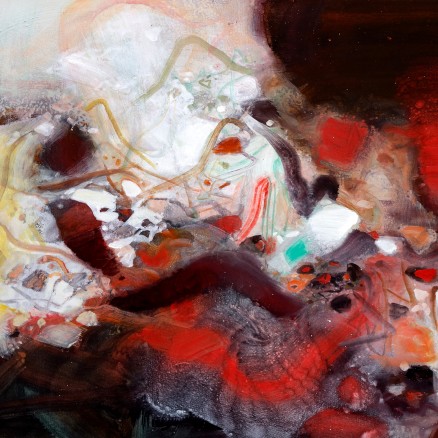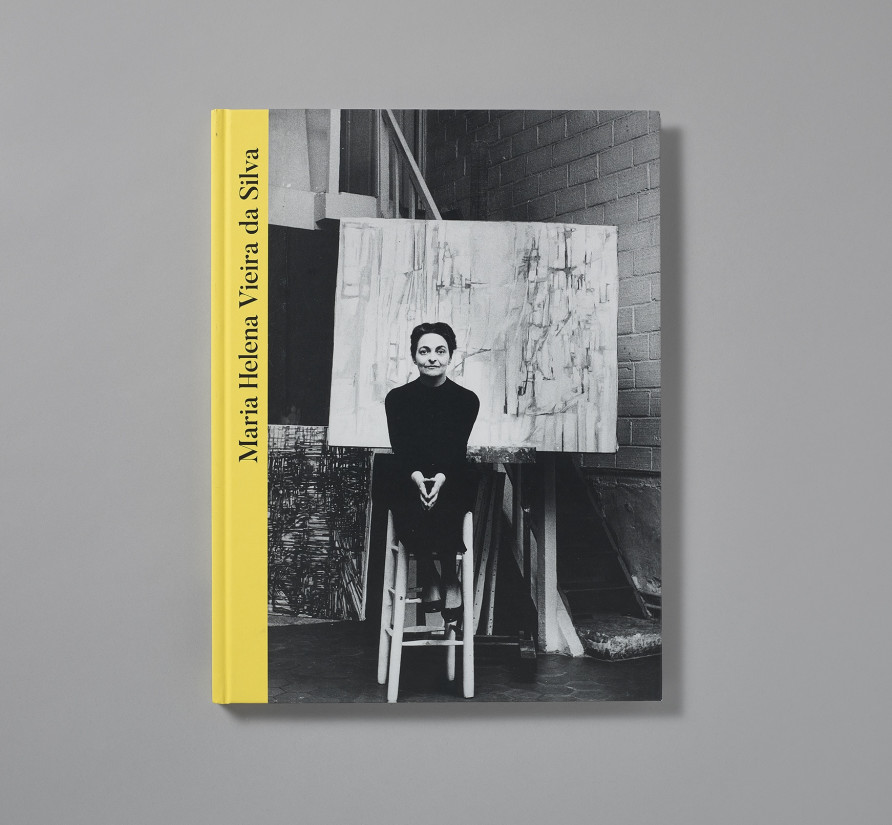Biography
Maria Helena Vieira da Silva (b. 1908, Lisbon, Portugal; d. 1992, Paris, France) enrolled at the Academia Nacional de Belas Artes, Lisbon, in 1919 to study drawing with Emilia Santos Braga. She moved to Paris from Lisbon in 1928 to study sculpture under Antoine Bourdelle and Charles Despiau at the Académie de la Grande-Chaumière. There she met her future husband, Hungarian painter Árpád Szenes, and in 1929 gave up sculpture for painting. Living in Paris, she absorbed a variety of influences, from the geometric abstraction of the group Cercle et Carré (Circle and Square, 1929–33) and Joaquín Torres-García, to avant-garde Cubism. Vieira da Silva began to paint rectangular patches of colourto recall the Hispano-Arabic Azulejo tiles, undulating cobbled pavements and tiered architecture of Lisbon. In 1933, Vieira da Silva had her first solo exhibition at Galerie Jeanne Bucher, Paris; the gallery remained her main dealer throughout her career.
At the outbreak of the Second World War, Vieira da Silva and Szenes fled to Portugal before moving on to Rio de Janeiro. Jeanne Bucher organised her first solo exhibition in New York at Marian Willard Gallery in 1946. She continued to paint and exhibit in Brazil until her return to Paris in 1947. In the 1950s, Vieira da Silva’s paintings echoed the grim realities of post-war Europe. Titles such as ‘La gare inondée’ (The flooded station) (1956), ‘La traboule’ (1957) and ‘Ruines’ (Ruins) (1956) reflect the flooded and razed cities, claustrophobic corridors and altered landscapes after the war. Vieira da Silva became a French citizen in 1956, and was awarded the Commandeur de l’Ordre des Arts et des Lettres in 1962. She was the first woman to receive the French Grand Prix Nationale des Arts in 1966.
Vieira da Silva has had retrospectives at Kestner Gesellschaft, Hannover, in 1958; Musée national d’art moderne, Paris, in 1969–70; Musée d’art moderne de la Ville de Paris in 1977; Gulbenkian Museum, Lisbon, in 1988, touring to Grand Palais, Paris; and Fundación Juan March, Madrid, in 1991. During the course of her career, the French State acquired several of her paintings, three of which hang in the Musée National d’Art Moderne, Paris. In 1994, Guy Weelen and Jean-François Jaeger’s two volume catalogue raisonné and monograph of Vieira da Silva’s work was published by Skira. Her works are held in important collections throughout the world, including Museum of Modern Art, New York; Tate, London; Stedelijk Museum, Amsterdam; and Centre Georges Pompidou, Paris.
Read moreWorks
-
 Maria Helena Vieira da Silva, Artémis, 1968
oil on canvas
38 x 55 cm
Maria Helena Vieira da Silva, Artémis, 1968
oil on canvas
38 x 55 cm
-
 Maria Helena Vieira da Silva, Sans titre, 1955
oil on canvas
60 x 73 cm
%3Cdiv%20class%3D%22artist%22%3E%3Cspan%20class%3D%22artist%22%3E%3Cstrong%3EMaria%20Helena%20Vieira%20da%20Silva%3C/strong%3E%3C/span%3E%3C/div%3E%0D%3Cdiv%20class%3D%22title%22%3E%3Cem%3ESans%20titre%3C/em%3E%2C%201955%3C/div%3E%0D%3Cdiv%20class%3D%22medium%22%3Eoil%20on%20canvas%3C/div%3E%0D%3Cdiv%20class%3D%22dimensions%22%3E60%20x%2073%20cm%3C/div%3E
Maria Helena Vieira da Silva, Sans titre, 1955
oil on canvas
60 x 73 cm
%3Cdiv%20class%3D%22artist%22%3E%3Cspan%20class%3D%22artist%22%3E%3Cstrong%3EMaria%20Helena%20Vieira%20da%20Silva%3C/strong%3E%3C/span%3E%3C/div%3E%0D%3Cdiv%20class%3D%22title%22%3E%3Cem%3ESans%20titre%3C/em%3E%2C%201955%3C/div%3E%0D%3Cdiv%20class%3D%22medium%22%3Eoil%20on%20canvas%3C/div%3E%0D%3Cdiv%20class%3D%22dimensions%22%3E60%20x%2073%20cm%3C/div%3E -
 Maria Helena Vieira da Silva, Bibliothèque, 1952
oil on canvas
73 x 92 cm
%3Cdiv%20class%3D%22artist%22%3E%3Cspan%20class%3D%22artist%22%3E%3Cstrong%3EMaria%20Helena%20Vieira%20da%20Silva%3C%2Fstrong%3E%3C%2Fspan%3E%3C%2Fdiv%3E%0D%3Cdiv%20class%3D%22title%22%3E%3Cem%3EBiblioth%C3%A8que%3C%2Fem%3E%2C%201952%3C%2Fdiv%3E%0D%3Cdiv%20class%3D%22medium%22%3Eoil%20on%20canvas%3Cbr%20%2F%3E%0A%3C%2Fdiv%3E%0D%3Cdiv%20class%3D%22dimensions%22%3E73%20x%2092%20cm%3C%2Fdiv%3E
Maria Helena Vieira da Silva, Bibliothèque, 1952
oil on canvas
73 x 92 cm
%3Cdiv%20class%3D%22artist%22%3E%3Cspan%20class%3D%22artist%22%3E%3Cstrong%3EMaria%20Helena%20Vieira%20da%20Silva%3C%2Fstrong%3E%3C%2Fspan%3E%3C%2Fdiv%3E%0D%3Cdiv%20class%3D%22title%22%3E%3Cem%3EBiblioth%C3%A8que%3C%2Fem%3E%2C%201952%3C%2Fdiv%3E%0D%3Cdiv%20class%3D%22medium%22%3Eoil%20on%20canvas%3Cbr%20%2F%3E%0A%3C%2Fdiv%3E%0D%3Cdiv%20class%3D%22dimensions%22%3E73%20x%2092%20cm%3C%2Fdiv%3E -
 Maria Helena Vieira da Silva, Sans titre, 1949
oil on canvas
65 x 80 cm
Maria Helena Vieira da Silva, Sans titre, 1949
oil on canvas
65 x 80 cm
-
 Maria Helena Vieira da Silva, Le couloir (ou Intérieur), 1948
oil and graphite on canvas
46 x 55 cm
Maria Helena Vieira da Silva, Le couloir (ou Intérieur), 1948
oil and graphite on canvas
46 x 55 cm
Learn more about the life and works of Maria Helena Vieira da Silva
Latest



























